WHAT WE ATE
- Mazesoba, 75/100 (04 Aug 2025, Seletar Mall)
- Lobster Ramen, 75/100 (04 Aug 2025, Seletar Mall)
- Buta Shogayaki Tonkotsu Ramen, 85/100 (03 Jul 2022, Harbourfront)
- Tonkotsu Ramen, 70/100 (03 Jul 2022, Harbourfront)
- Garlic Tonkotsu Ramen, 75/100 (03 Jul 2022, Harbourfront)
Ramen Hitoyoshi Singapore has quietly built a loyal following for its creamy, pork-rich tonkotsu ramen and consistent execution across locations. Founded by two local chefs who previously trained under the Keisuke brand, Hitoyoshi has grown from a single ramen spot into a full-fledged chain offering more than just noodles. Their menu now includes donburi, side dishes, and seasonal specials—without losing focus on the broth that started it all.
One of the brand’s more impressive feats is how well it maintains quality across its outlets. Whether you’re at HarbourFront, Clarke Quay, or Hillion Mall, the bowls hit a similar note—something not all ramen chains in Singapore pull off. If you’re looking for tonkotsu ramen Singapore that’s local in origin but built on Japanese fundamentals, this brand is worth shortlisting.
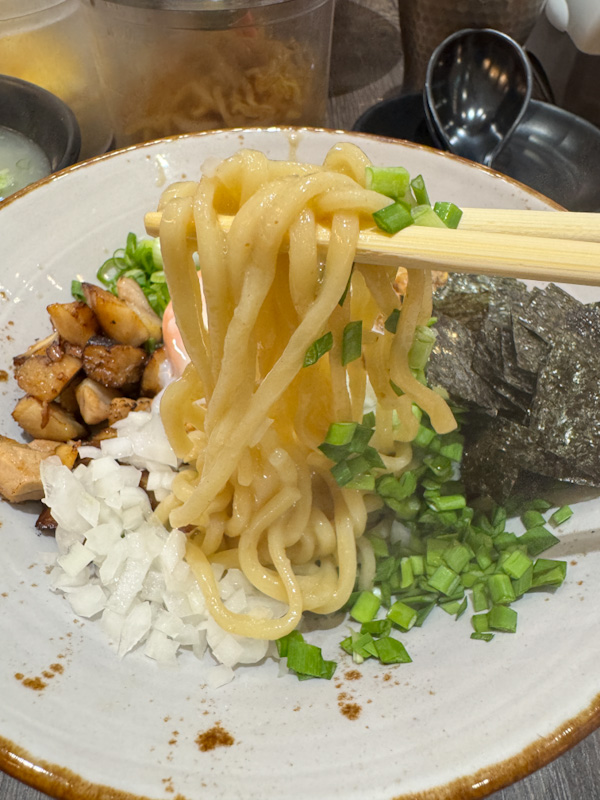
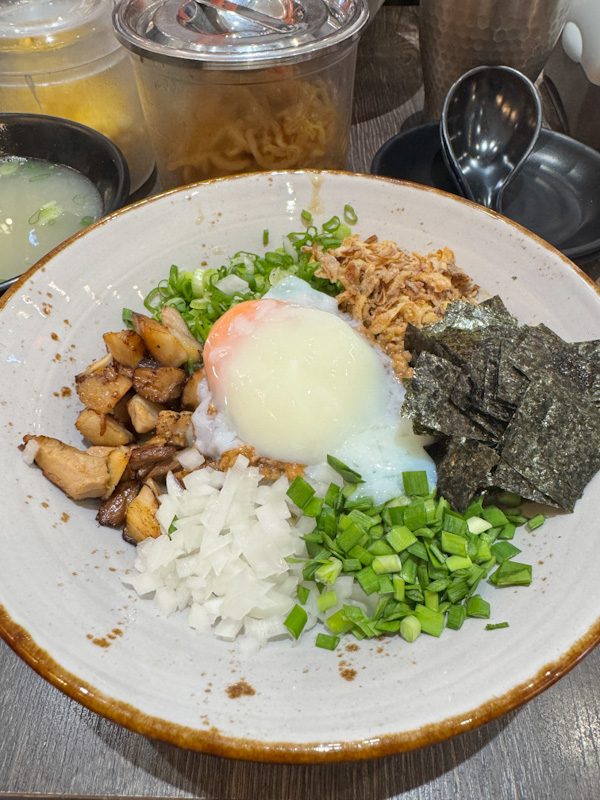
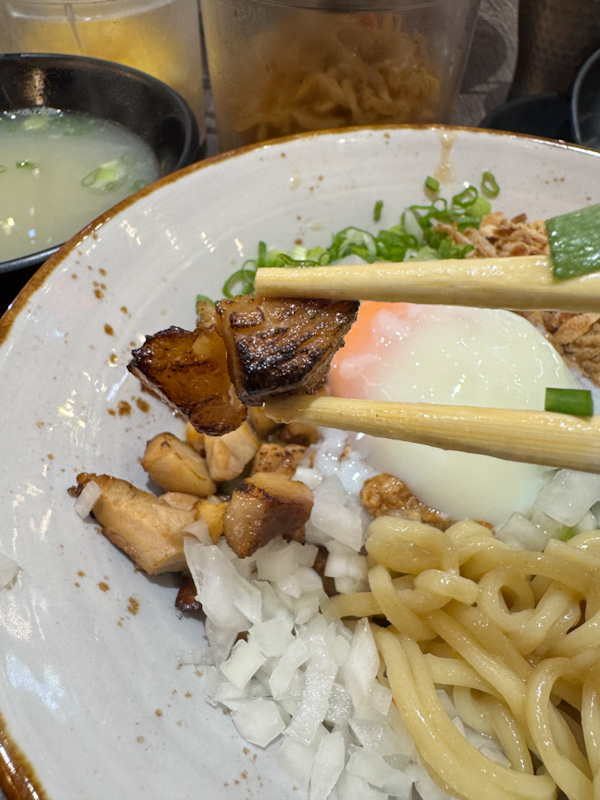
Mazesoba: 75/100
Noodle: 25/35
The noodles are medium thick and wavy, with a smooth surface and a springy, chewy bite. The texture leans toward mochi mochi—soft yet resilient, with a satisfying mouthfeel. Flavour-wise, the wheat notes come through nicely, and there’s no unpleasant alkaline taste.
That said, while the noodles are well-prepared, they don’t have a distinct identity. They serve their purpose without standing out, feeling more like a neutral base than a highlight of the bowl.
Sauce: 25/35
The sauce starts with a mild savoury tone and develops into a creamier profile, likely thanks to the onsen egg mixing in. It has a gentle umami depth, accompanied by a sweet undertone that helps balance the richness.
While nothing about the sauce jumps out immediately, it grows on you with each bite. That’s often the mark of a well-balanced blend—nothing too dominant, just enough cohesion to keep your palate engaged.
On the side is a clear soup that feels like a diluted wanton broth—bland, almost hollow. Instead of refreshing the palate, it actually distracts from the main dish. I’d argue it would have been better left out entirely.
Meat: 15/20
The meat comes in small, aburi-style cubes—likely pork belly. Each piece strikes a good balance between tender lean meat and melt-in-the-mouth fat. The marination is bold, offering a strong salty-sweet hit, and the charred aroma from the torching adds depth without overwhelming the dish.
The texture is chewy but not tough, giving you enough resistance to enjoy the bite without working for it. A dependable protein element that holds its own.
Other Toppings: 10/10
- Fried shallots: Light, aromatic, and thankfully not greasy. They bring crunch and subtle fragrance without weighing down the bowl.
- Seaweed: Served in larger flakes rather than fine strands, which works surprisingly well here. The flavour is more pronounced and distributes better through the noodles.
- Negi: Crunchy and fresh, with just the right amount of piquant lift to cut through the richness.
- Diced white onions: Juicy and slightly fruity at first bite, followed by a faint spicy finish. Their clean crunch contrasts nicely with the chewy noodles and brings another layer to the bowl.
Summary
This bowl doesn’t try to overwhelm you with complexity—but that’s part of its charm. The noodles and sauce are well-balanced, even if they’re not particularly bold. The toppings are where the bowl really shines—each one thoughtfully selected and texturally well-placed.
If you enjoy mazesoba that leans clean and quietly confident rather than heavy and loud, this is a bowl worth trying. At 75/100, it’s a good showing that delivers comfort, subtlety, and balance.
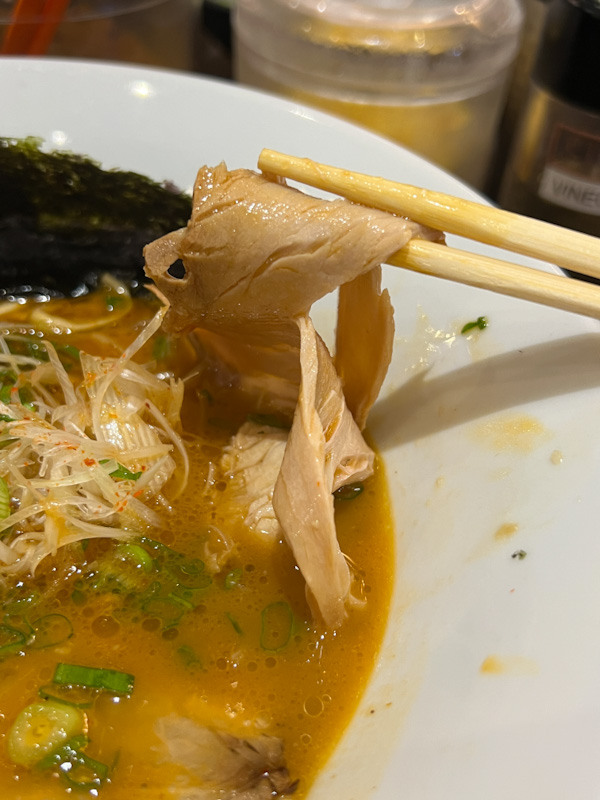
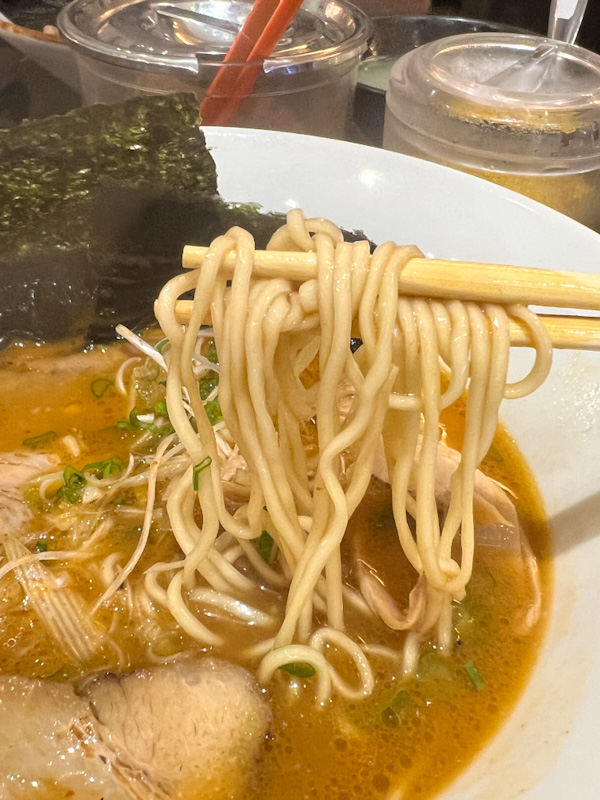

Lobster Ramen: 75/100
Noodle: 25/35
The noodles are medium-thin and have a nice snappy texture, though they were served just a little too soft for my preference. The mouthfeel leans slightly sticky—it clings to the teeth more than it should. Still, the wheat flavour is pleasant and distinct, offering a nutty undertone that plays well with the soup. They perform well overall, but a firmer cook would have sharpened their character.
Soup: 25/35
This is where the lobster ramen gets interesting. The broth opens with an unmistakable prawn brain intensity—a heady hit of shellfish umami. The body is savoury but lacks the depth and creaminess often associated with lobster or seafood bisque-style ramen. There’s a bittersweet undercurrent, which adds complexity, but the broth never quite rounds out.
The ending note is marked by a metallic tang that lingers. It’s not off-putting, but it shifts the tone of the soup subtly. For those who love the concentrated flavour of crustaceans, this is a bowl that grows on you. Each sip becomes more compelling as the flavours settle in. It’s not for everyone, but it rewards the shellfish faithful.
Meat: 15/20
Two thin slices of chashu are served, and they’re surprisingly different in cut. One was lean, almost entirely fat-free—firm with a mild chew. The other had generous fat layering, yielding a much softer, more tender texture.
Both were well-executed: moist, lightly marinated, and balanced in flavour. The marination is subtle enough to let the pork’s natural savouriness come through, with just a hint of sweetness at the finish. It’s not a standout element, but it’s dependable and well-considered.
Other Toppings: 10/10
- Bamboo shoots are cooked to near-mush—soft, savoury, and fully infused with the broth’s flavour. If you like your menma tender, this works.
- Negi provides a mild piquant note that cuts through the shellfish richness.
- Shiranegi, while visually present, is largely overpowered by the soup—more ornamental than functional.
- Large sheet of seaweed soaks up the prawn-heavy broth and adds a welcome umami kick.
- Table condiments include marinated spicy beansprouts, which shift the profile mid-meal with a tangy, spiced crunch, and sweet corn, which surprisingly works—its fruity sweetness offsets the briny heaviness of the broth in a clever, palate-resetting way.
Summary
Lobster Ramen walks a fine line between bold seafood expression and subtle complexity. The broth isn’t as rich or creamy as some might expect, but it carries a deep shellfish identity that grows with each bite. The noodles, meat, and toppings all hold their ground, with the supporting cast—especially the seaweed and optional beansprouts—adding texture and dimension.
This bowl isn’t trying to be crowd-pleasing. It’s made for a more acquired palate—one that enjoys the sharper, brinier end of the ramen spectrum. If you’re that person, it’s worth a visit.
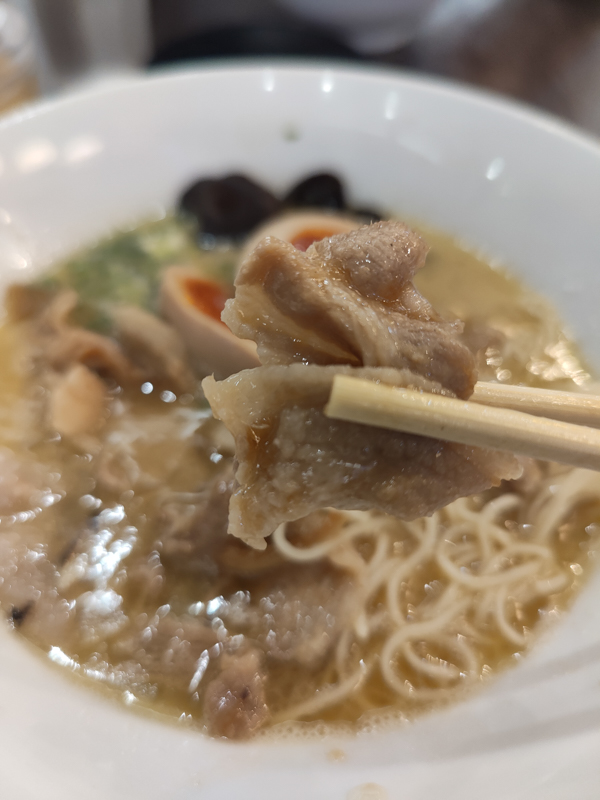
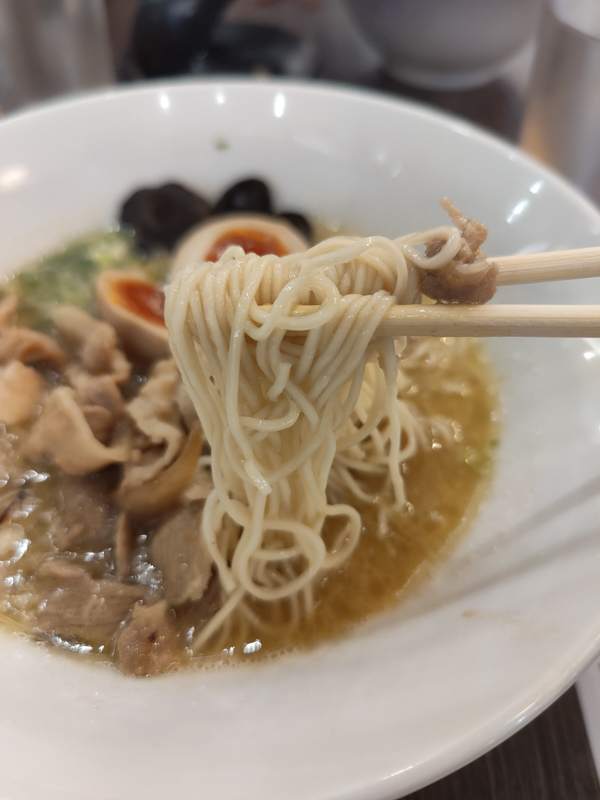
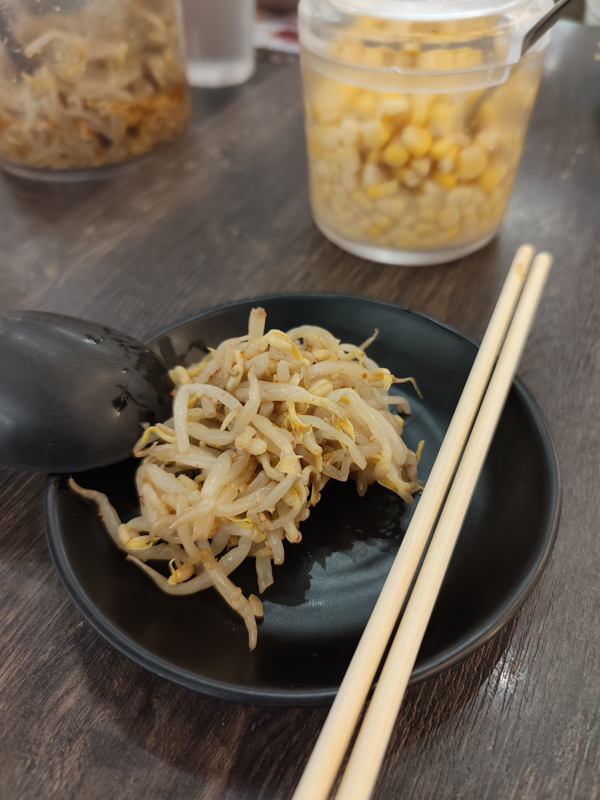
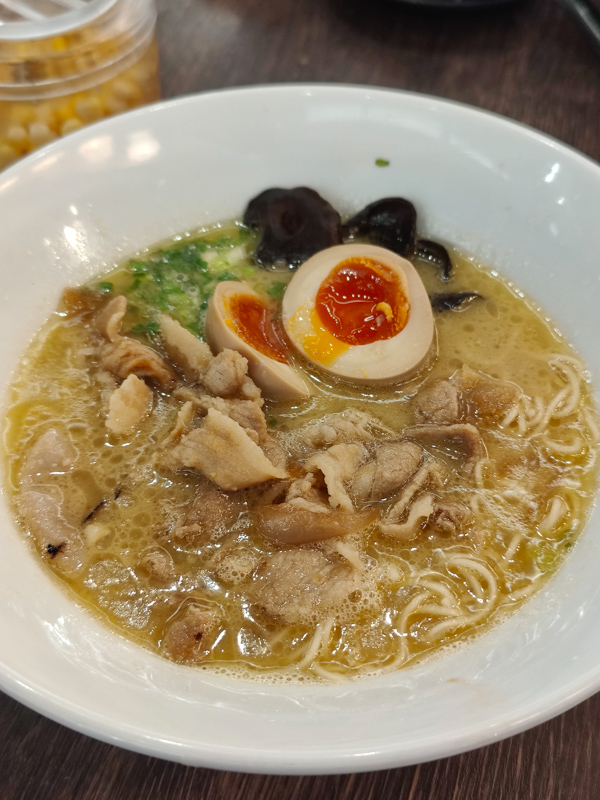
BUTA SHOGAYAKI TONKOTSU RAMEN: 85/100
Noodle – 25/35
As with the other bowls in this series, the noodles are the classic long, thin Hakata style—firm, quick to slurp, and structurally sound throughout the meal. They deliver a clean, taut bite that stands up well to the richness of the broth, performing more as a textural counterpoint than a flavour driver.
Flavour-wise, the wheat notes are delicate and easily overpowered by the deeply porky soup. They do their job admirably, offering consistency and chew, but they remain a supporting act in a broth-forward composition.
Soup – 30/35
Although the kitchen team comes from Keisuke, this broth leans closer to Ikkousha in spirit—with an assertive porkiness and a thick, almost emulsified mouthfeel. A generous layer of rendered fats gives it both body and visual weight, and the flavour is bold, savoury, and just shy of overindulgent.
What really sets this bowl apart is the integration of stir-fried, marinated pork slices into the broth. Their residual oils and seasoning introduce another dimension, deepening the soup’s flavour and giving it a smoky, savoury lift.
That said, a notch more pork bone intensity—something funkier, fattier, more marrow-driven—would have nudged this toward a perfect score. Still, as it stands, this is an incredibly enjoyable, full-bodied broth with a satisfying build-up of flavour.
Meat – 20/20
The hero protein here is the buta shogayaki—thinly sliced pork stir-fried in a sweet soy-based marinade. The slices are tender, well-caramelised, and carry a faint smokiness from the wok.
The balance between sweet and savoury is well-judged; the sugar in the soy marinade lifts the meat without making it cloying. There’s a subtle gingery undertone, though it could be pushed further to elevate the dish and justify the “shogayaki” label more explicitly.
Still, as a topping, this meat works exceptionally well with the broth—both flavour-wise and texturally. It’s cohesive, satisfying, and one of the strongest meat executions across the tonkotsu variants.
Toppings – 10/10
The marinated eggs are perfectly executed, featuring a golden, runny yolk. Similarly to Keisuke, the ramen includes complimentary marinated bean sprouts, although I personally prefer Keisuke’s version, which stands as a dish on its own due to its richer flavor. The bean sprouts here offer a slight spiciness but are less flavorful.
In addition to the bean sprouts, sweet corn is served as a topping. When added midway into the soup, it significantly transforms the flavor profile in a delightful manner. This combination works exceptionally well with the intensely rich broth, preventing taste fatigue and allowing for a prolonged enjoyment of the dish.
Summary
Buta Shogayaki Tonkotsu Ramen blends richness and balance with impressive control. While the base broth is already enjoyable on its own, it’s the interplay with the marinated stir-fried pork that gives this bowl its signature depth. The toppings are thoughtful and functional, with the sweet corn and bean sprouts offering crucial contrast to the otherwise full-bodied profile.
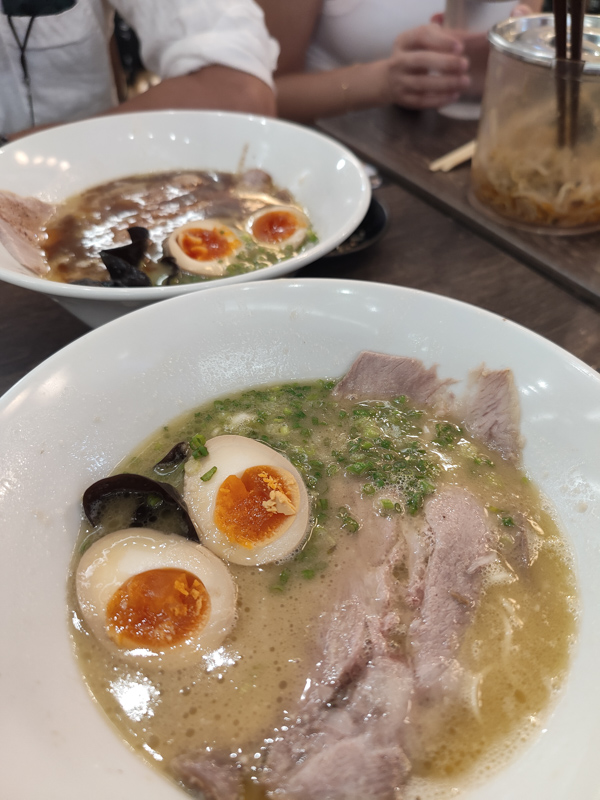
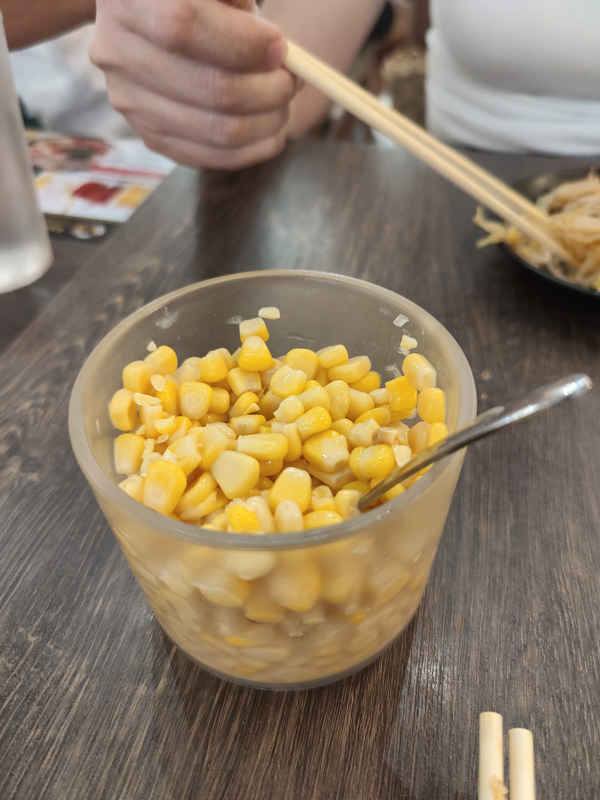
TONKOTSU RAMEN: 70/100
Noodle – 25/35
The noodles here are the same long, thin Hakata-style used in the other bowl—quick-cooking, with a springy, elastic bite that holds up well in hot broth. Texturally, they offer a firm chew and slurp easily, delivering the structure that Tonkotsu typically demands. However, the flavour of the noodles feels muted—subtle wheat notes are there, but they sit in the background against the broth’s dominant richness. In this case, the noodles serve more as a vehicle than a co-star, letting the broth take centre stage.
Broth – 25/35
The tonkotsu broth delivers on richness, with a pronounced porkiness that hits right from the start. It’s thick, opaque, and fatty, clinging to each strand of noodle with a lip-smacking texture. That said, the flavour profile leans one-dimensional. With little layering or nuance, the broth’s intense pork character can feel heavy and fatiguing midway through the bowl.
Adding sweet corn from the complimentary condiments is a smart move—it cuts through the intensity with its natural sweetness, resetting your palate and helping to sustain the experience. Without it, the broth might overstay its welcome.
Meat – 10/20
The chashu here is soft and tender, though it falls short of the melt-in-your-mouth standard. It holds its form well, with a decent fat-to-lean ratio, but the flavour struggles to assert itself. In a broth this rich, the pork needs to either contrast or amplify. Here, it does neither—it gets lost in the background, making it more forgettable than it should be.
Toppings – 10/10
- Tamago: Same as before—well-marinated, golden yolk, soft texture, and reliable.
- Black fungus: Adds a firm crunch and mild earthy flavour that offsets the creaminess of the broth.
- Negi: Offers a mild aromatic lift and some piquancy.
- Marinated spicy beansprouts: A crunchy, spiced contrast that adds dimension mid-meal.
- Sweet corn: Surprisingly essential—its sweetness works wonders to brighten the otherwise heavy profile.
Summary
This tonkotsu ramen hits the richness benchmark, but lacks the finesse and layering that makes the best versions so addictive. The noodles are structurally solid but flavour-wise subdued, and the chashu fades into the broth instead of anchoring the bowl. Toppings—especially the free condiments—do a lot of the heavy lifting, rescuing the experience from becoming monotonous.
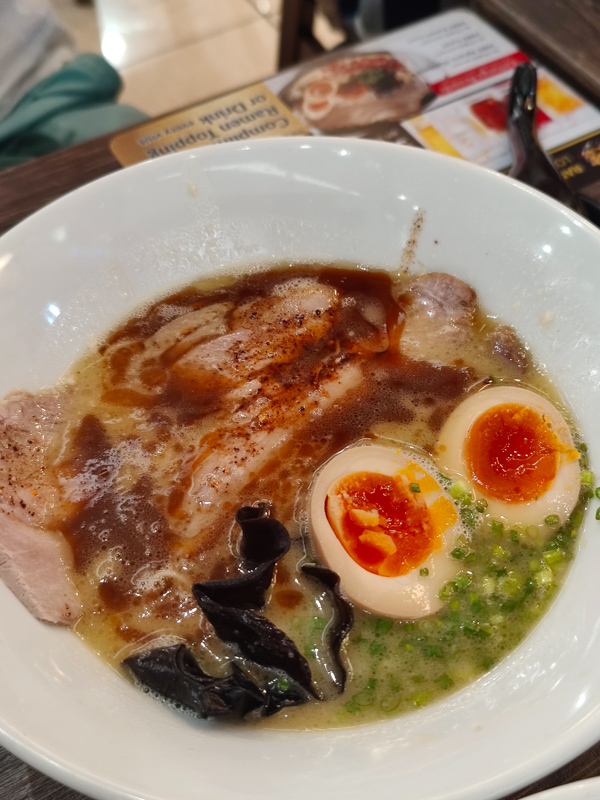
GARLIC TONKOTSU RAMEN: 75/100
Noodle – 25/35
The noodles here are the familiar long, thin Hakata-style variety—quick-cooking with a firm bite and clean slurp. Texturally, they’re satisfying, delivering a taut chew that holds up well in the hot broth. However, the flavour leans mild. The wheat notes are present but subtle, and in the context of a garlic-rich broth, they recede even further into the background. They do their job well, but they’re not the highlight.
Broth – 30/35
This version dials down the intense porkiness of the standard tonkotsu and introduces a rounded, aromatic garlic profile that brings better balance to the bowl. The garlic doesn’t overpower—it integrates into the broth in a way that softens the heaviness and introduces a new layer of flavour without tipping into acrid or bitter territory.
It is on the oilier side, which some might find excessive, but it works here. That oil carries the garlic essence and spreads it across the palate. When paired with sweet corn and marinated beansprouts (both available as complimentary toppings), the broth becomes even more dynamic. The corn brings sweetness, the beansprouts add crunch and spice, and together they create a much more engaging bowl.
Meat – 10/20
The chashu remains unchanged from the standard version. It’s soft and holds its moisture well, but it doesn’t melt on contact. Flavour-wise, it’s subtle—pleasant but easily overshadowed by the stronger garlic-tonkotsu broth. A thicker cut or deeper marination might have helped it stand out more.
Toppings – 10/10
- Tamago: Consistently prepared with a soft yolk and mild, savoury marinade.
- Black fungus: Adds texture and a faint earthiness that cuts through the richness.
- Negi: Offers a crisp, aromatic lift.
- Spicy marinated beansprouts: Adds a savoury, crunchy element that breaks up the oiliness.
- Sweet corn: Brightens the broth with a gentle sweetness and helps reset the palate between bites.
Summary
Garlic Tonkotsu is a more balanced and flavour-layered take on the classic tonkotsu formula. The garlic cuts through the pork fat without overpowering it, giving the broth a richer and more rounded profile. The noodles stay in the supporting role, and while the chashu still underdelivers, the broth and toppings more than make up for it.
DISCLAIMER
One man’s meat is another man’s poison.
Find out more about our palettes and how we evaluate our ramen here. 😉

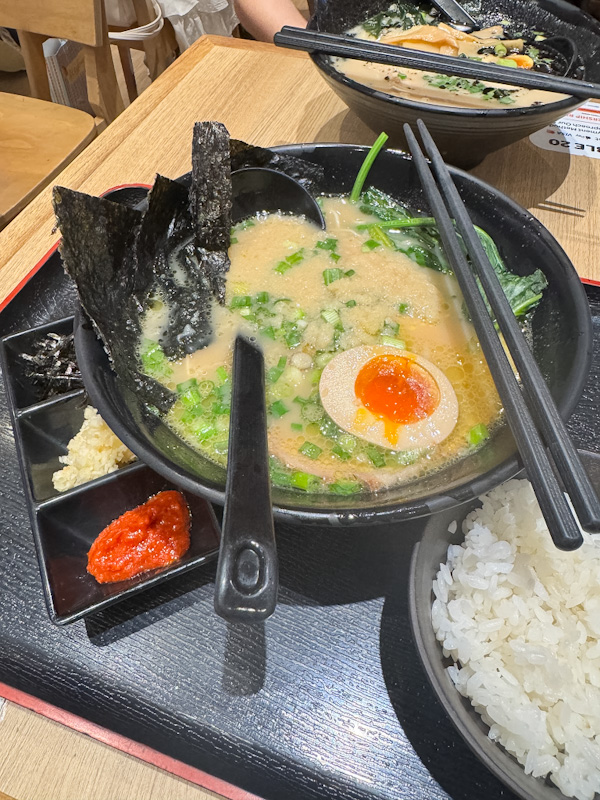
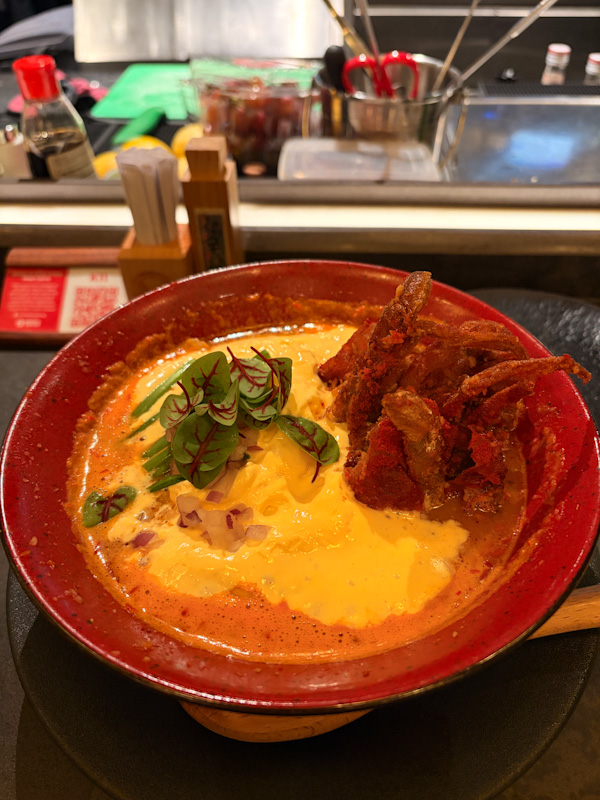
Pingback: Top 17 Best Ramen in Singapore 2023: A Comprehensive Review of Over 100 Bowls
Pingback: Review of Ajisen Headquarters (Kumamoto, Japan)